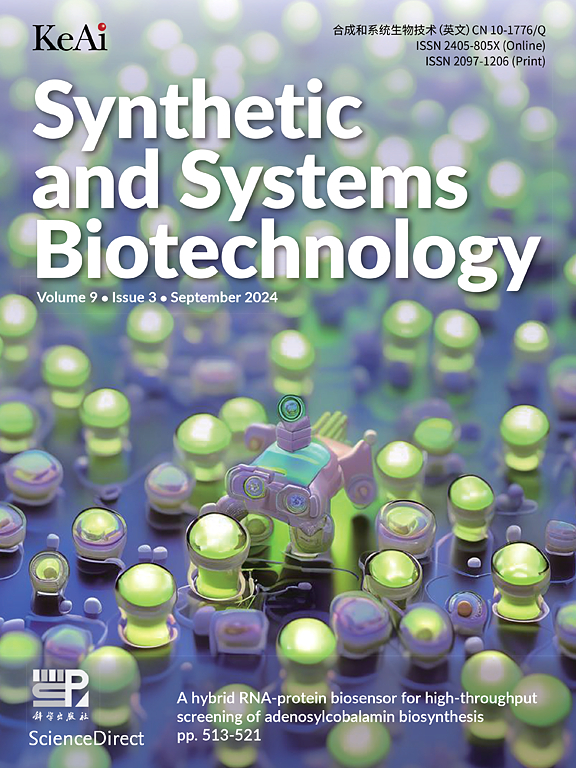用纳米体调制离子通道
IF 4.4
2区 生物学
Q1 BIOTECHNOLOGY & APPLIED MICROBIOLOGY
引用次数: 0
摘要
离子通道在调节膜电位和跨膜信号转导中发挥重要作用,使其成为了解各种生理过程和相关疾病的重要靶点。深入了解它们的结构和功能特性对开发治疗干预具有重要意义。近年来,从骆驼类动物中提取的单结构域抗体纳米小体已成为离子通道和合成生物学研究的有力工具。它们的小尺寸、高特异性和识别难以到达的表位的能力比传统抗体和生物制剂具有优势。此外,它们与人类IgG家族III的可变区相似,减少了对免疫原性的担忧。纳米体为探索离子通道结构-功能关系提供了新的机会,并为传统药物提供了一种有希望的替代方案,传统药物经常面临脱靶效应和毒性等挑战。这篇综述强调了应用纳米体来询问和调节离子通道活性的最新进展,强调了它们克服当前技术和治疗局限性的潜力。本文章由计算机程序翻译,如有差异,请以英文原文为准。

Modulating ion channels with nanobodies
Ion channels play instrumental roles in regulating membrane potential and cross-membrane signal transduction, thus making them attractive targets for understanding various physiological processes and associated diseases. Gaining a deeper understanding of their structural and functional properties has significant implications for developing therapeutic interventions. In recent years, nanobodies, single-domain antibody fragments derived from camelids, have emerged as powerful tools in ion channel and synthetic biology research. Their small size, high specificity, and ability to recognize difficult-to-reach epitopes offer advantages over conventional antibodies and biologics. Furthermore, their resemblance to the variable region of human IgG family III reduces immunogenicity concerns. Nanobodies have introduced new opportunities for exploring ion channel structure-function relationships and offer a promising alternative to conventional drugs, which often face challenges such as off-target effects and toxicity. This review highlights recent progress in applying nanobodies to interrogate and modulate ion channel activity, with an emphasis on their potential to overcome current technical and therapeutic limitations.
求助全文
通过发布文献求助,成功后即可免费获取论文全文。
去求助
来源期刊

Synthetic and Systems Biotechnology
BIOTECHNOLOGY & APPLIED MICROBIOLOGY-
CiteScore
6.90
自引率
12.50%
发文量
90
审稿时长
67 days
期刊介绍:
Synthetic and Systems Biotechnology aims to promote the communication of original research in synthetic and systems biology, with strong emphasis on applications towards biotechnology. This journal is a quarterly peer-reviewed journal led by Editor-in-Chief Lixin Zhang. The journal publishes high-quality research; focusing on integrative approaches to enable the understanding and design of biological systems, and research to develop the application of systems and synthetic biology to natural systems. This journal will publish Articles, Short notes, Methods, Mini Reviews, Commentary and Conference reviews.
 求助内容:
求助内容: 应助结果提醒方式:
应助结果提醒方式:


